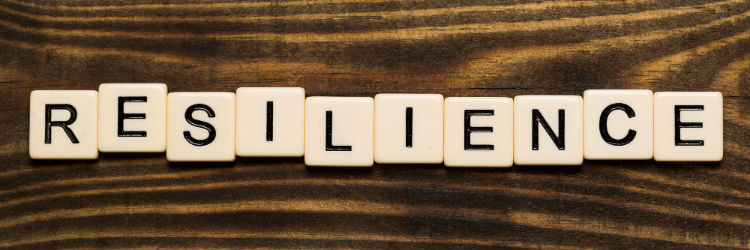How to be resilient and bounce back better than before

The ability to be resilient is not just ‘nice to have,’ it has now become a ‘must have.’ But instead of taking the macro view of resilience — the long view, encompassing a process that often takes many years — Micro-Resilience by Bonnie St John and Allen Haines exclusively studies the day‑by‑day, hour‑by‑hour challenges of resilience. Here they explain exactly what micro-resilience is and how you can take small steps any time, any where, to bounce back even better than before.
The focus of micro-resilience is on the ordinary interactions with friends, family, and co-workers that throw us into conscious or unconscious turmoil. For most of us, the hundreds of miniature bruises we experience each day determine the overall quality of our lives far more dramatically than the giant traumas that punctuate the decades. It’s crucial to recognize that micro-resilience is different from what we refer to as macro-resilience — the set of more time-consuming habits, such as exercise, meditation, and careful nutrition, that give us increased energy and better health over the long term.
Micro-resilience is in no way a substitute for these critical building blocks of physical and mental health. But macro processes take weeks and often months of diligent, consistent work to show results, and implementing this sustained attention is often where we fail. We fantasize that ‘someday’ we will find time to make our macro investment in health, but our goalposts keep moving forward. How many times have you heard (or said), ‘I’ll do it when we move into a new house . . . when I get promoted . . . when the kids go to university’? Micro-resilience, on the other hand, takes almost no time and works immediately — hour by hour, day by day.
You can use micro-resilience right now, as you read, and see results. In a world where we stand impatiently tapping a foot in front of a microwave, it’s important to provide an approach that fits into our instant-everything culture. Try the Joy Kit Reframe, below, as a sample exercise to develop a more positive attitude, and watch the results unfold!
Joy Kit Reframe: Apply First Aid to Your Emotional Cuts and Bruises
Picture a typical first-aid kit — a white plastic or metal box about the size of a lunch box, painted with a red cross on the front. We keep these kits at home because we know that eventually someone will get a cut or burn that requires treatment. That was our original inspiration for the Joy Kit: no matter how hard we try to maintain it, our positive attitude will, from time to time, get burned or cut or injured in some way, so why not be ready with a first-aid kit for joy? When clients overreact, deadlines seem impossible, or coworkers don’t give you what you need to meet your commitments, you can access your personal stash of things guaranteed to cheer you up. What shifts us to the positive is unique to each individual, so your Joy Kit should be completely personal. Bonnie’s consists of a miniature red canvas tote bag that contains chocolate, a picture of her daughter when she was a toddler, and a note from her (departed) mother in her extravagant, old-fashioned penmanship that says,’Cherish yourself.’ Allen has a bag full of IOUs from his youngest daughter promising hugs and kisses, pictures of sailboats and ski mountains, and a small painting his older daughter gave him when she was little. We’ve seen people include bottles of sand from vacations in Aruba and Acapulco. Others keep digital recordings of their dogs barking or their children laughing. Thank-you notes you’ve received can help when it seems as if no one appreciates you. If you stop for a few minutes to contemplate what brings you from ‘down in the dumps’ to ‘up and at ’em,’ you can take better charge of how you feel.
Joy Kit Reframe: Tips
- Make a list of things that inspire joy in you — photos, souvenirs, mementos, music, poems, thank-you notes, and other items.
- Keep joy-inspiring items handy in a bag or a box on your desk. When you experience a down moment, take one or two of these items out and focus on them. Items you view on your desk every day, like family photos, may not pack the same punch as something you draw on only when you need a lift.
- Create a digital Joy Kit — a folder on your computer, tablet, or phone that contains articles, songs, and pictures that make you feel good.
- Ask someone at work or in your family to surprise you with something from your Joy Kit when you are having a bad day. We’re often the last people to know when we need it ourselves.
- If you know someone well, you can make a ‘starter’ Joy Kit as a gift. Fill it with the recipient’s favorite foods, photos of shared memories, or perhaps a gift certificate for a massage. The recipient can then add items and personalize the kit for himself.
Bonnie St. John, amputee/Olympian/Rhodes Scholar, is a keynote speaker and leadership consultant who has guided individuals – from Fortune 500 C-Suites to start-up entrepreneurs – to their performance goals. Her broad media exposure includes People, Forbes, Essence,The NY Times, Today, CNN, CBS News, PBS, and NPR. NBC News called her, ‘One of the five most inspiring women in America’. Allen Haines served as CEO of several film industry marketing companies. He has advised and coached senior executives at Sony, Disney, IMG, NBC/Universal, and Fox.


